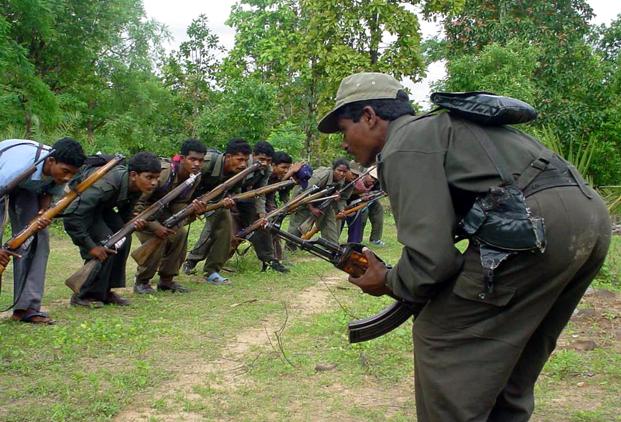New Delhi: Odisha recorded 75 violent incidents and 12 deaths owing to Maoist related activities in 2018, a Union Ministry of Home Affairs report has said.
According to the report, Odisha comes fourth in the list along with Maharashtra. Chhattisgarh, Jharkhand and Bihar are the most affected states.
Chhattisgarh was the most Maoist-affected state in 2018. However, there was a decline of 8.3 per cent in incidents of violence and a reduction of 8.7 per cent in the number of deaths compared to 2017.
Overall, in 2018, a total of 392 violent incidents were reported in which 153 died. Chhattisgarh was followed by Jharkhand (205 incidents and 43 deaths), Bihar (59 incidents and 15 deaths), Odisha (75 incidents and 12 deaths) and Maharashtra (75 incidents and 12 deaths), said the annual report of the Ministry of Home Affairs.
However, there was a ‘significant decline’ in Maoist violence as well as the geographical spread of the rebel group in 2018, said the report, which was released last week.
There has been an overall 26.7 per cent reduction in violent incidents (1,136 to 833) and 39.5% reduction (397 to 240) in Left Wing Extremism (LWE) or Maoism related deaths since end-2013, the report said.
In comparison to 2017, there has been a decline of 8.3 per cent (908 to 833) in incidents of violence and the number of deaths by 8.7 per cent (263 to 240) in 2018.
The casualties to security forces declined by 10.7 per cent (75 to 67) and the number of LWE cadres eliminated went up by 65.4 per cent (136 to 225) in 2018 compared to 2017.
At the same time, the developmental outreach by the government of India has seen an increasingly large number of LWE cadres shunning the path of violence and returning to the mainstream, said the report.
Chhattisgarh and Jharkhand together accounted for 71.7 per cent of the violent incidents and 81.7 per cent of deaths. Odisha and Maharashtra followed by Bihar accounted for 9 per cent, 9 per cent and 7.1 per cent of the incidents respectively in 2018.
Andhra Pradesh, Madhya Pradesh and Telangana together reported less than 4 per cent incidents.
A total of 2,213 violent incidents and 1,005 deaths were reported in 2010 in the top 10 most Maoist affected states that include Andhra Pradesh, Bihar, Chhattisgarh, Jharkhand, Madhya Pradesh, Maharashtra, Odisha, Telangana, Uttar Pradesh and West Bengal.
In 2011, there were 1,760 violent incidents and 611 deaths, followed by 1,415 incidents and 415 deaths in 2012; 1,136 incidents and 397 deaths in 2013; 1,091 incident and 310 deaths in 2014; 1,089 incidents and 230 deaths in 2015; 1,048 incidents and 278 deaths in 2016.
“The overall improvement in LWE scenario can be attributed to greater presence and increased capacity of the security forces across the LWE affected states, better operational strategy and better monitoring of development schemes in affected areas,” the report said.
Noting that the ‘police’ and ‘public order’ being state subjects, the Ministry said action with respect to maintenance of law and order lies primarily in the domain of the state governments concerned.
Therefore, the Ministry said, the Centre’s policy is to effectively deal with the Maoist insurgency primarily by capacity building of the state governments, both in the areas of security and development.
“The Centre has adopted an integrated and holistic approach to deal with Maoist insurgency by addressing the areas of security, development and promoting good governance simultaneously.”
To achieve this, the Ministry said, it adopted several security-related measures that include providing Central Armed Police Forces (CAPFs), sanctioning India Reserve (IR) battalions, modernizing and upgrading the state police under the umbrella scheme ‘Modernization of Police Forces’ (MPF scheme), reimbursement of security-related expenditure and strengthening Special Intelligence Branches of the states and fortification of police stations under the Special Infrastructure Scheme (SIS).
Providing helicopters for anti-LWE operations, assistance in training of state police through Defence Ministry, Central Police Organizations and Bureau of Police Research and Development, sharing of intelligence, facilitating inter-State coordination, Community Policing and Civic Action are among other measures being adopted by the Centre.
Simultaneously, the Ministry said, focused attention is also given to development through the launch of special schemes for improving the basic infrastructure such as road and telecom connectivity and skill up gradation.
Besides, implementing the Forest Rights Act, 2006, especially the provisions on allotment of title deeds to individuals and communities, is also a priority area.
To give further impetus, the Ministry said, funds are provided for filling critical infrastructure gaps in public infrastructure and services which are of urgent nature under Special Central Assistance (SCA) scheme for the most affected LWE districts.
“The underlying philosophy is to enhance the capacity of state governments to tackle the LWE menace in a concerted manner. Resolute implementation of the National Policy and Action Plan by the government has resulted in significant improvement in the LWE scenario across the country,” said the Ministry.
PNN & Agencies

